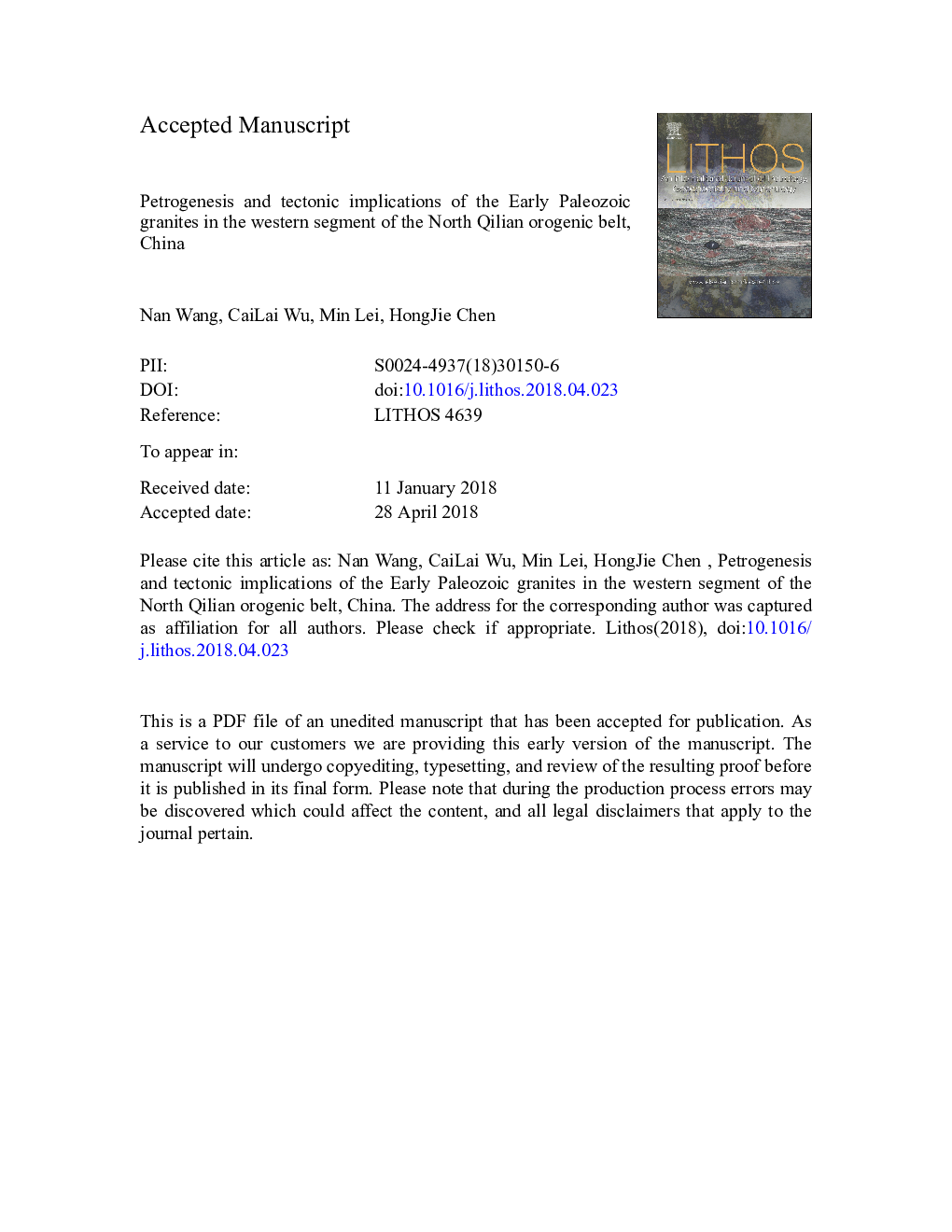| Article ID | Journal | Published Year | Pages | File Type |
|---|---|---|---|---|
| 8911584 | Lithos | 2018 | 59 Pages |
Abstract
Early Paleozoic granitic magmatism in the North Qilian orogenic belt records a complete Wilson cycle and provides critical geological clues for unraveling the regional tectonic history. In this study, we report the results of zircon U-Pb ages, Hf isotopic analysis and systematic whole-rock geochemical data for the Late Ordovician Hongliuhe granite and Early Silurian Qingshan monzogranite in the western segment of the North Qilian orogenic belt to constrain their emplacement ages, petrogenesis, and regional evolution history. U-Pb dating reveals that the Hongliuhe granite was emplaced around 453-452â¯Ma, and the Qingshan monzogranite was emplaced about 440-438â¯Ma. A geochemical study shows that the two granites belong to the calc-alkaline to high-K calc-alkaline series. The Hongliuhe granite shows adakitic and peraluminous features, while the Qingshan monzogranite belongs to metaluminous to weak peraluminous granites. Zircons in the Hongliuhe granite show εHf(t) values ranging from â15.1 to +11.7 with two-stage Hf model ages (tDM2) of 687-2398â¯Ma, whereas zircons in the Qingshan monzogranite show εHf(t) values ranging from +5.7 to +11.0 with two-stage Hf model ages from 814 to 1057â¯Ma. The geochemical characteristics indicate that the Hongliuhe granite was a transitional I/S-type granite and was generated from a thickened lower crust with the addition of minor Paleo- to Mesoproterozoic crustal materials, which left a rutileâ¯+â¯garnetâ¯+â¯pyroxeneâ¯Â±â¯plagioclase residue. The Qingshan monzogranite formed from the partial melting of mafic crust with minor mantle-derived materials, and the fractionation of Ti-bearing phases, apatite and pyroxene occurred during the magma's evolution, which left an amphibole and plagioclase residue. We infer that the Hongliuhe granite formed during the northward subduction of the North Qilian Ocean, while the Qingshan monzogranite was generated during the post-collision stage between the Qilian and Alxa blocks. This observation indicates that syn-collision stage of the North Qilian orogenic belt began before 453â¯Ma, and that the extension regime began prior to 444â¯Ma.
Related Topics
Physical Sciences and Engineering
Earth and Planetary Sciences
Geochemistry and Petrology
Authors
Nan Wang, Cai-Lai Wu, Min Lei, Hong-Jie Chen,
